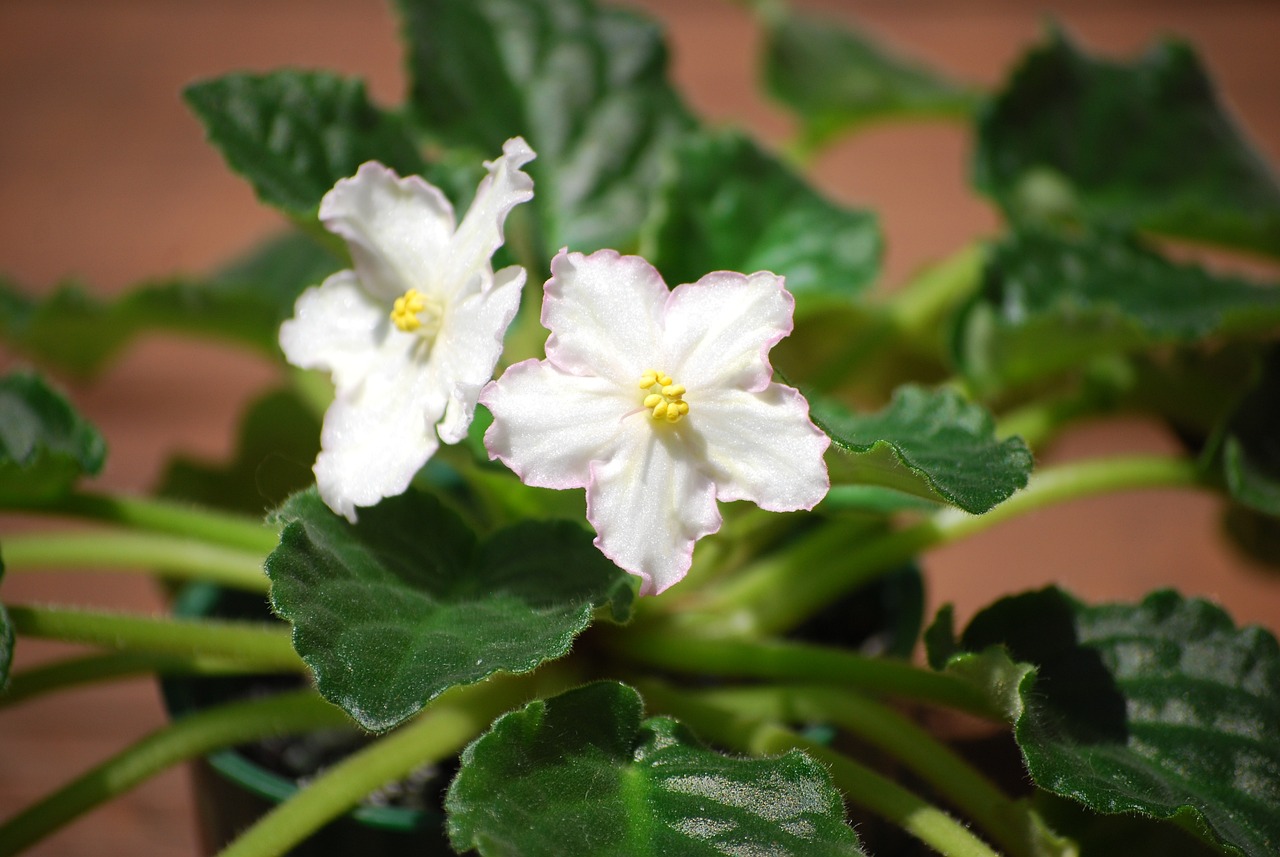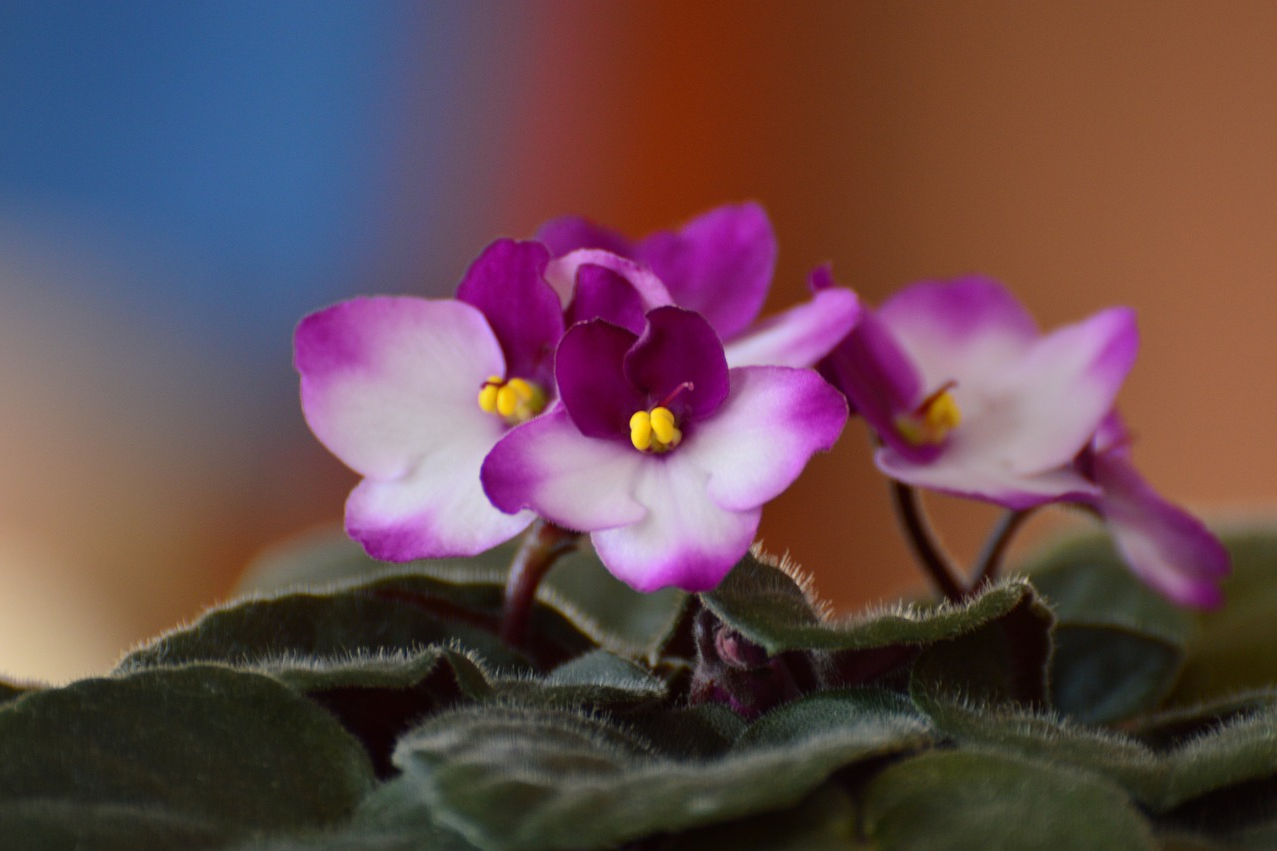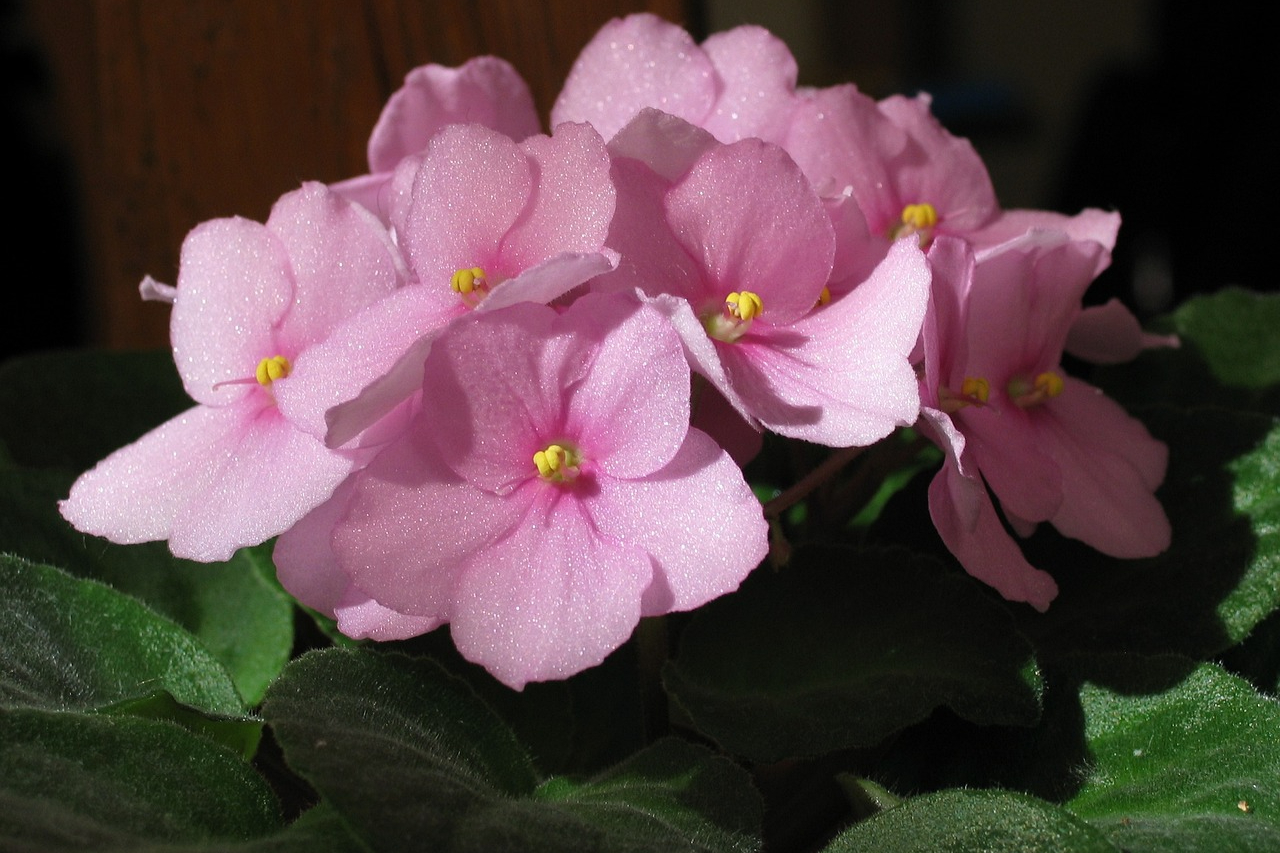Gardens bursting with all sorts of colors can be a marvelous sight, especially in the summer, but if you lack space, then an outdoor garden may not be feasible. Indoor gardens can sometimes have little color, because of a lack of sunlight indoors, and some of the most beautiful indoor plants, like orchids, are tricky to care for. Luckily, there are plants like African violets. African violets are easy to care for and beautiful.
With their fuzzy leaves and lovely little flowers, they are a great way to brighten up small or shady rooms and add a little cheer to your home. Here’s what you need to know about African violet care for the indoors.
Varieties of African violets

African violets, despite their name, are not actually related to violets. They are a relatively small section of the Streptocarpus genus, but they do bear a striking resemblance to the genus Viola (true violets). Although the classic African violet is purple with dark leaves, there are some fun variations you can choose if you want to shake things up a bit.
Persian Prince is a blue variety with scalloped leaves. First Kiss Blush is a sweet shade of pink, speckled with purple. For something a little more unusual, try Summer Twilight, a blue and white African violet with crimped petals, or Zephyr, a pink and white ruffled variety.
If you’d like something even more ruffled, try Julia, a pale variety with several layers of crimped, curly petals. If darker flowers appeal to you more, then you should look at VaT Pavlin or LE Vega, as both varieties have deeper, richer colors.
Planting African violets

Start with a small flower pot that has plenty of drainage holes in the bottom. There are some specific soil mixes for African violets available online, but you can also use regular potting soil. It should be a well-draining soil with a neutral pH and contain organic matter. An easy way to improve poor-quality potting soil is by adding a small amount of compost to it.
You can grow African violets from seeds, cuttings, offshoots, or nursery starts, and you may even be able to find mature plants. If you have a mature plant or a nursery start, gently remove it from the container it came in. Don’t pull on the stem to get it out! Instead, lightly press on the sides of the pot and wiggle the plant from side to side. Brush any loose soil off of the roots and then repot it in your flower pot. Make sure to plant it at roughly the same depth as it was previously, so the stem isn’t buried.
Growing African violets from seeds or cuttings takes longer. Some varieties can take nearly a year to bloom after planting. Offshoots are a little faster. They grow from some adult plants and you can carefully separate them from the main plant.
African violet care

African violet care indoors is easy, as these plants thrive in bright, indirect light. The partial or filtered sunlight they receive from nearby windows is enough to keep them happy. Place your potted African violets in front of or beside windows, where they can get 6 to 8 hours of indirect light. Direct sunlight can result in sunburned leaves and leggy flowers. If you suspect the light in your window is too strong, a light, gauzy curtain can diffuse it.
Water your African violets below the leaves. Like most plants with fuzzy leaves, African violets can develop leaf rot if their leaves are soaked. Proper drainage is important for African violets. Keep the soil moist, but not soaking wet, and never let them sit in water. These plants can develop root or stem rot when overwatered.
Additionally, African violets are sensitive to the cold. Water them with lukewarm or room temperature water instead of cold water. Keep them away from drafty windows, especially during winter.
Common problems and solutions

The most common problems when growing African violets come from overwatering or exposure to the cold. They rarely have an issue with large pests, but small mites, such as cyclamen mites and spider mites, can become a problem. Keeping their leaves free of dust can reduce the chances of infestation. The bristles on African violet leaves can catch and hold dust and dirt, which you can gently brush away.
An interesting quirk of African violets is that they tend to thrive when the container they’re in is slightly too small. As a result, repotting them too frequently can cause them to lose some of their luster, which leads to smaller or fewer blooms. Repotting too frequently also increases the likelihood of disturbing or damaging their roots.
Instead of repotting them on a schedule, only repot your African violets when necessary. Some signs that it’s time to repot your African violets include leaf loss and roots that are visible above the surface of the soil or through the drainage holes.
African violet companion plants

Since African violets are typically grown in containers, there are two tactics you can take when planning your companion plants. If your companion plants are in different containers, then any plant that enjoys similar lighting can grow and thrive beside your African violets. Bromeliads, succulents, crotons, and Flamingo flowers are a few popular choices, but any plant that enjoys bright, indirect light will work. If you want your companion plants to share a container, then you’ll have to be a little more careful with your selection.
Keep in mind that African violets enjoy small spaces and moist soil. Plants that prefer dry conditions or a lot of space likely won’t make a good companion. Consider pairing multiple African violets together or planting them with closely related plants such as cape primrose, gloxinia, and episcia.
African violets are stunning and easy to take care of in the summer and all year! Now that you know how to keep them happy and healthy, you can fill your home with these beautiful flowers. Just remember to keep them warm, give them plenty of indirect sunlight, and occasionally brush the dust off their leaves with a paper towel or cloth. Enjoy your delightful new addition to your indoor garden!




